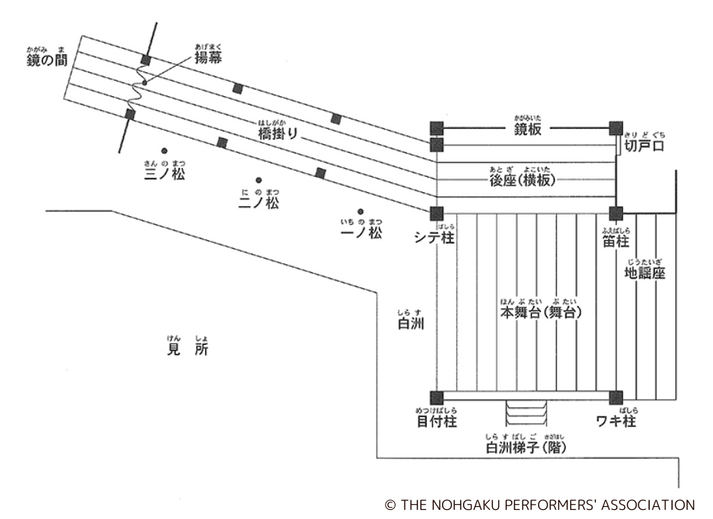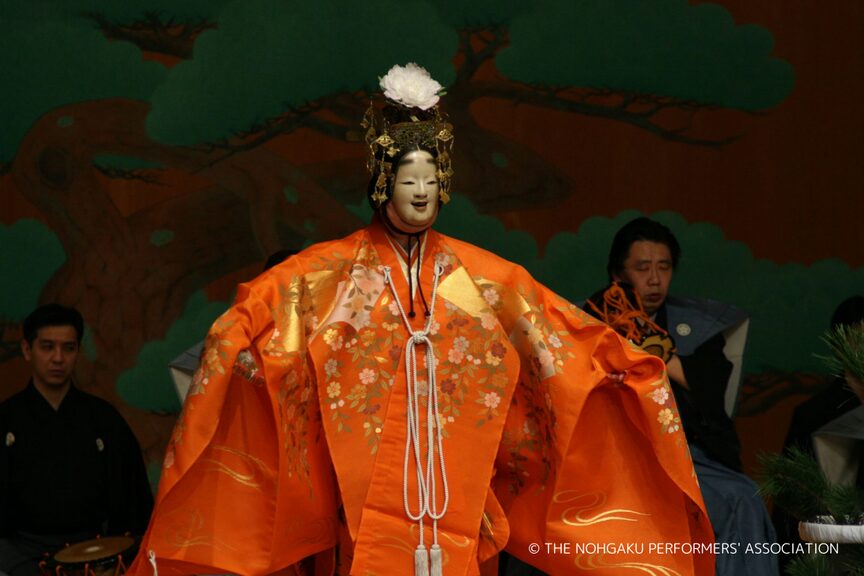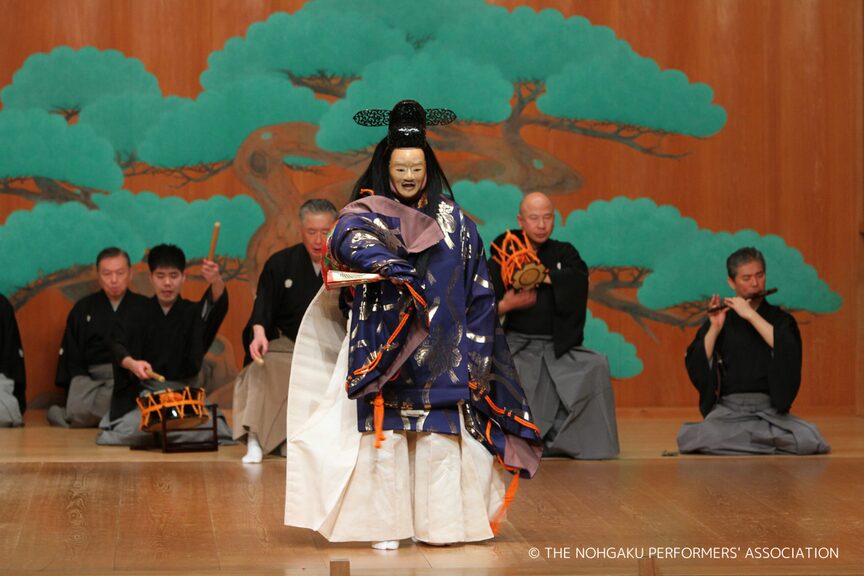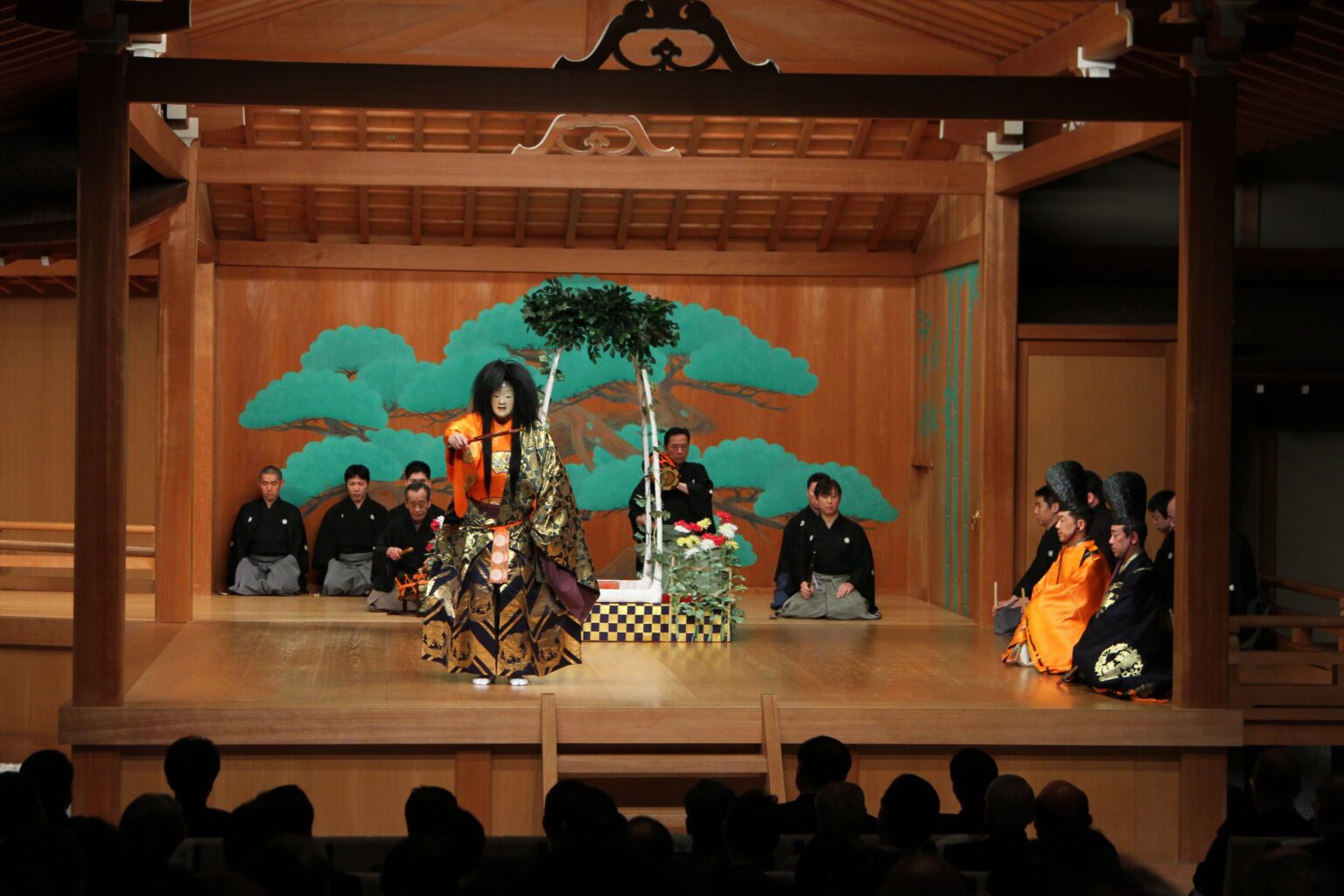Noh for Beginners
Introduction
“What is Noh? I’ve heard it has a history, but I don’t quite understand it!”
This page is an easy-to-understand introduction to “Noh” for beginners.
It’s the kind of information you’ll want to talk about tomorrow.
Shall we take a small step into the world of Noh?
What is Noh?
- Q“What exactly is Noh?”
- A
Welcome to the world of Noh! On this page, we guide you through Noh in a fun and easy way. Noh is one of Japan’s traditional forms of theater and is a stage art with a history of over 650 years. It was loved by many historical figures, including Toyotomi Hideyoshi and Tokugawa Ieyasu.
“Noh” and “Kyogen” together are called “Nohgaku.” “Noh” is a musical drama performed to songs (chants/lines) and musical accompaniment, often featuring actors wearing masks called Noh masks.
Characters include not only humans but also gods, demons, spirits, and otherworldly beings. The performers express emotions through stylized and simple movements, advancing the story.
“Kyogen” is a comedy based on the daily life of medieval commoners, focusing on dialogue. Unlike Noh, it is mostly performed without masks, and it draws out the universal humor of human nature through laughter.
The Noh Stage
- Q“What is the Noh stage like?”
- A
The Noh stage is called the Noh butai. While we explain the structure of the Noh butai in detail in the “First Visit to a Noh Theater” here’s a brief introduction.
First, upon entering a Noh theater, many are surprised to see a large roof over the Noh stage. This is a remnant of the past when Noh stages were outdoors.
Also, there is no curtain on the Noh stage. How does the performance start? The performers enter the stage through a pathway called the “hashigakari.” The story does not begin immediately after the curtain opens. Instead, as the performers and props are arranged on the stage, the audience is gradually drawn into the world of Noh. After the performance ends, the performers and props disappear from the stage, and tranquility returns.
The Noh stage is a theatrical space for weaving stories that transcend time and space.

Terms
- Q“I often hear ‘Shite’ and ‘Waki’ in Noh, but what are they?”
- A
The terms used in Noh are unique and might seem a bit complicated. But don’t worry! Here, we will explain commonly used terms in a simple way. For example, “Shite” is the main character, and “Waki” is the role of the Shite’s counterpart. In short, these two are the central figures in the story.

Musical Instruments
- Q“Is there music in Noh?”
- A
Music is essential in Noh. Four types of instruments are used: Fue (flute), Ko-tsuzumi (shoulder-drum), Ō-tsuzumi (hip-drum), and Taiko (stick-drum). The music varies from slow to fast, adding depth to the story.
Noh music is made up of unique rhythms and melodies, leading us into the world of Noh. The music, along with the stories performed on stage, shows the performers’ detailed skills in bringing ancient tales to life today.
Every beat of the percussion is filled with energy, and the clear tones of the flute create a space around them. As the audience listens, they can imagine and feel the vibrant life of the Noh stage.
.png)
Costumes
- Q“What are Noh costumes like?”
- A
Noh costumes are called “shozoku.” Gods and noblewomen, for instance, wear “gorgeous” costumes, woven with gold and silver threads, which are spectacular just to look at.
Masks (“men”) are also used, each representing a specific character. The shozoku and men help identify who the character is.


Click or Tap Here for More Information About Masks
Plays
- Q“What are some famous Noh plays?”
- A
There are many plays in Noh, but some are performed repeatedly and are famous.
For example, Noh plays like ‘Hagoromo’ and ‘Takasago.’ ‘Hagoromo’ might be in textbooks, and ‘Takasago’ is often sung at weddings. The ‘Takasago’ seating for the bride and groom at the reception comes from the Noh play ‘Takasago.’
The most famous Noh playwright is Zeami. He left behind the famous saying, “Never forget the beginner’s spirit.”


How to Enjoy
- Q“How should I enjoy Noh?”
- A
There are various ways to enjoy Noh! For example, you can focus on the lavish costumes, the movements of the performers, or listen to the chanting and the sound of instruments. It’s important to “watch,” “listen,” and “feel.” Please find your own way to enjoy it.
Solving Everyone’s Concerns!

How should I enjoy Noh?

Good question. Noh is a performing art to be watched, listened to, and enjoyed. For example, you can focus on the performer’s gestures, the beauty of the luxurious costumes, the changes in the mask’s expressions, and listen to the live music. This way, you can feel the unique world of Noh.

Noh seems long… Can I watch it?

Some plays are short, and even the long ones are not all slow-paced. There are plays with dramatic developments happening one after another without a dull moment.

Where can I buy tickets?

You can purchase them at theaters or online. It’s smooth to check in advance. Enjoy a once-in-a-lifetime experience at the Noh Theater, immersed in its atmosphere.

I want to go see Noh, but how?

If you’re interested, start by checking the website of your nearest Noh theater. There you’ll find a wealth of information, including performance schedules, ticket details, and introductory lectures for beginners. Experiencing the atmosphere of a Noh theater and seeing a live performance will reveal even more of its charm.

Time for a Review Quiz!
Ready for a quiz? Tap or click on the screen and choose your answer. It’s okay if you get it wrong. The correct answer will be revealed immediately, so enjoy it as a step in learning. Let’s challenge!
What is the role of ‘Shite’?
- 1. Principal character
- 2. Supporting role
- 3. Musician
- 4. Opponent of the principal character
In Noh music, there are four types of instruments used: a flute, a small drum, and a large drum. What is the fourth one?
- 1. Koto
- 2. Tambourine
- 3. Drum
- 4. Shinobue (bamboo flute)
In Conclusion
Noh may seem a bit difficult at first glance, but the refined movements of the dance and the beauty of the music can be enjoyed by anyone.
If you felt a glimpse of the charm of Noh on this page, please go see an actual performance next. Experiencing live acting, sound, and the changing expressions of Noh masks will let you feel the profound charm of Noh even more.
There are various stories and plays in Noh, so by watching different performances, you can experience the diverse world of Noh.
Noh is an art open to beginners and enjoyable for everyone. Why not take your first step and immerse yourself in this traditional performing art?
主催:公益社団法人能楽協会、独立行政法人日本芸術文化振興会、文化庁
委託:令和5年度日本博 2.0 事業(委託型)
